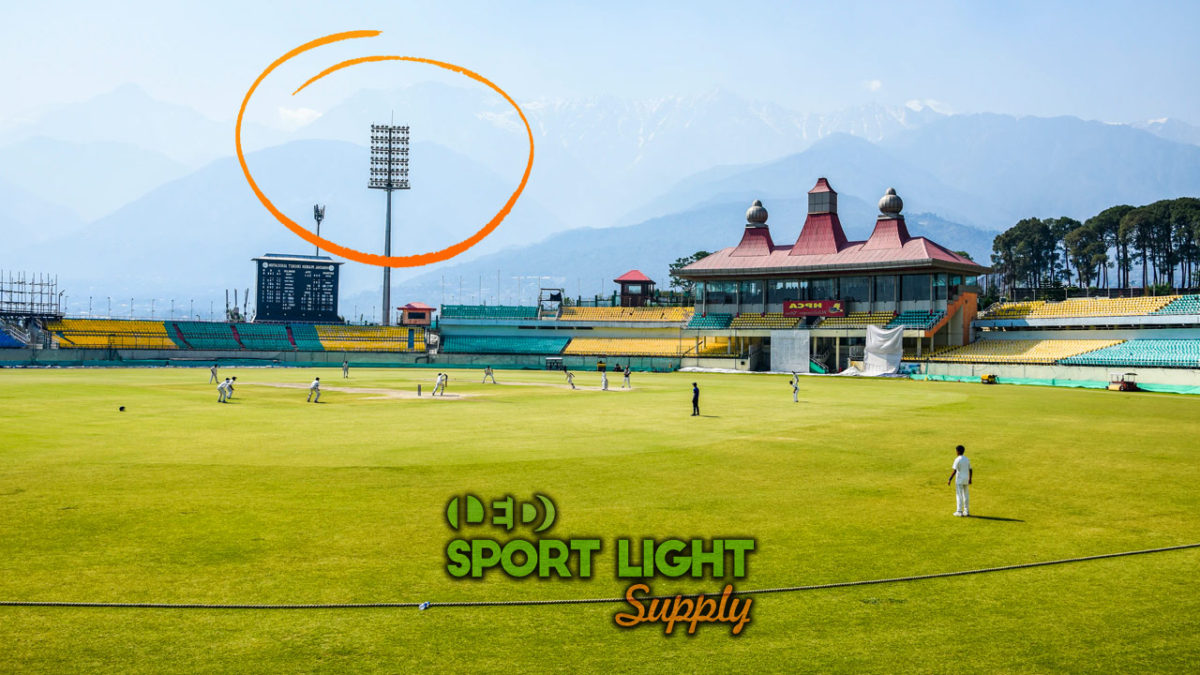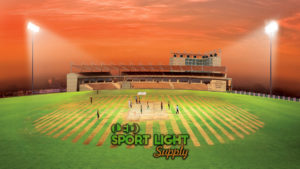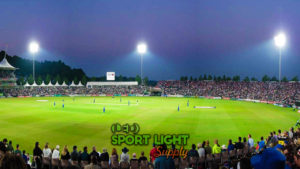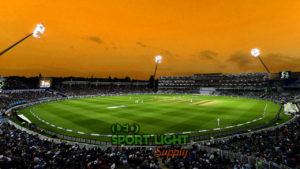The cricket field lighting wattage requirement may vary depending on the level of competition. Nowadays, many cricket stadium owners are going to replace or retrofit their lighting to LED. That’s why we need to understand how many watts do cricket ground lights need. Like other sports stadiums, cricket grounds use powerful floodlights to illuminate the entire pitch.
Average Cricket Stadium Lights Wattage
1. Class I (International, National or Regional Cricket Tournament)
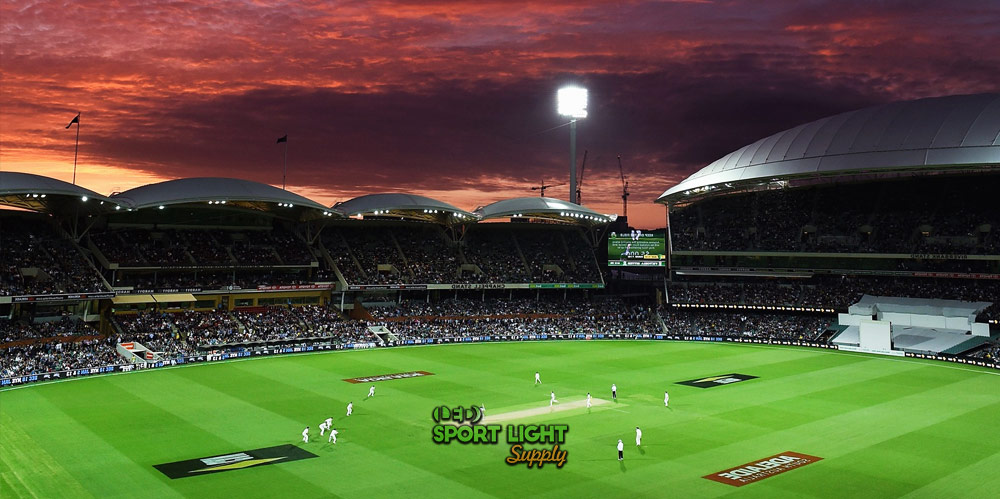
We need the highest standard lighting for class I cricket stadiums. The wattage required ranged from 100,000 to 200,000 watts for LED lights, 300,000 to 600,000 watts for metal halide, and 1,000,000 to 2,000,000 watts for halogen lights.
Sometimes, in order to meet the horizontal and vertical illuminance (lux) requirements for cricket broadcasting, 10 – 20% of additional power may be required.
The difference between the power of LED and halogen light is nearly 10 times due to the higher luminous efficacy of LED – LED is 150 lumens per watt, while halogen is only 15 lumens per watt; so if we use halogen lamps, more power is needed. The following table summarized the required wattage for class I cricket venues.
| Light source | Cricket stadium lighting wattage |
| LED | 100,000 to 200,000W |
| Metal halide | 300,000 to 600,000W |
| Halogen | 1,000,000 to 2,000,000W |
Nowadays, most cricket field lights use LED instead of metal halide, HPS, mercury vapor or halogen because LED has higher lighting efficiency. This means LEDs are always brighter under the same power consumption as conventional HID lighting fixtures.
2. Class II (Local Cricket Competition or Training)
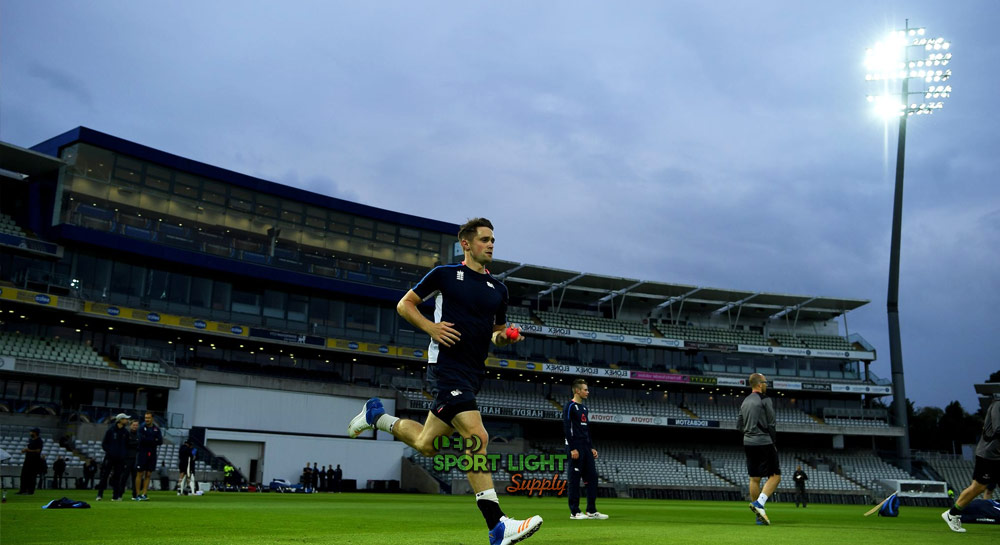
Class II cricket field is designed for regional or local club competition.
| Light source | Cricket field light wattage required |
| LED | 50,000 to 120,000W |
| Metal halide | 150,000 to 400,000W |
| Halogen | 500,000 to 1,200,000W |
The power of cricket field lighting is lower at this level because the lux requirement is lower – we don’t need such the bright lighting in class II cricket fields. Nonetheless, you still need more than 1 million watts if you intend to use halogens. By replacing the MH or halogen lights with LED, we can save a lot on electric bill.
3. Class III (Recreational, High School or College Cricket Ground)
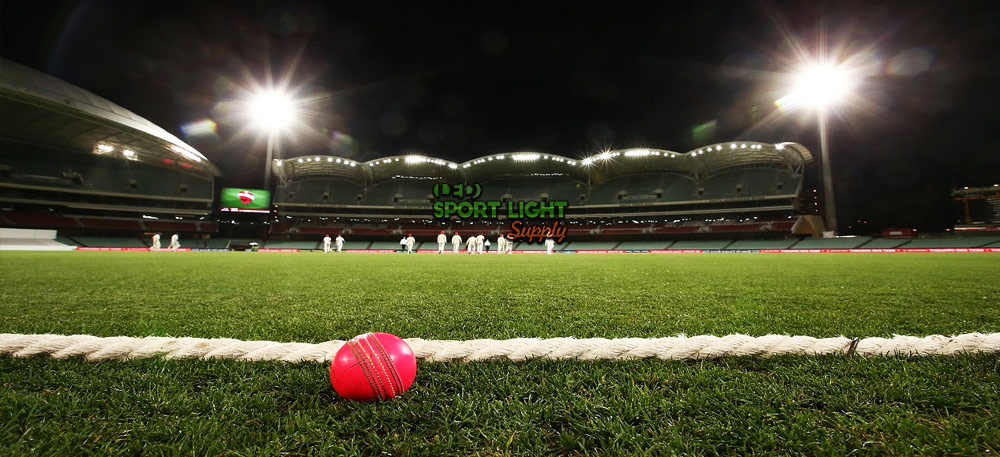
Recreational, high school or college cricket field belongs to class III. Since cricket ground doesn’t involve spectators, it requires lower illuminance level.
| Light source | Wattage needed |
| LED | 20,000 to 80,000W |
| Metal halide | 60,000 to 250,000W |
| Halogen | 200,000 to 800,000W |
Factors Affecting the Required Wattage of Cricket Field Lighting
The cricket field or stadium should have appropriate lighting. Even if they belong to the same class, they require different wattage because these fields have different size and light pole layout.
1. Size of Cricket Ground
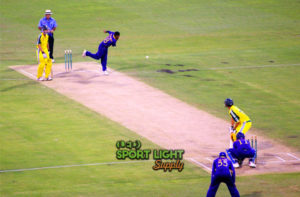 Cricket field sizes affects the required lumen and power of lighting. This is because we need to calculate the cricket stadium light power by this formula:
Cricket field sizes affects the required lumen and power of lighting. This is because we need to calculate the cricket stadium light power by this formula:
Lumen required = lux x cricket field size (in sq. meter)
Power of lighting fixture = lumen required / luminous efficacy of lighting
Thus, the wattage is directly proportional to the cricket field or stadium size.
2. Cricket Stadium Light Pole Height
Cricket field light pole height affects power of LED lighting as well. The general idea is that the taller the light pole, the more the light loss. This is because the light beam diverges and attenuates when the light travels through the air. That’s why we need to overcome it by increasing the power of the cricket field lights or using the smaller beam angle to make the light more concentrated.
The common cricket field light poles are about 14 to 50 meters (46 to 164ft) in height, while class I & II cricket fields usually request taller light poles. So, we need more wattage in these types of stadiums.
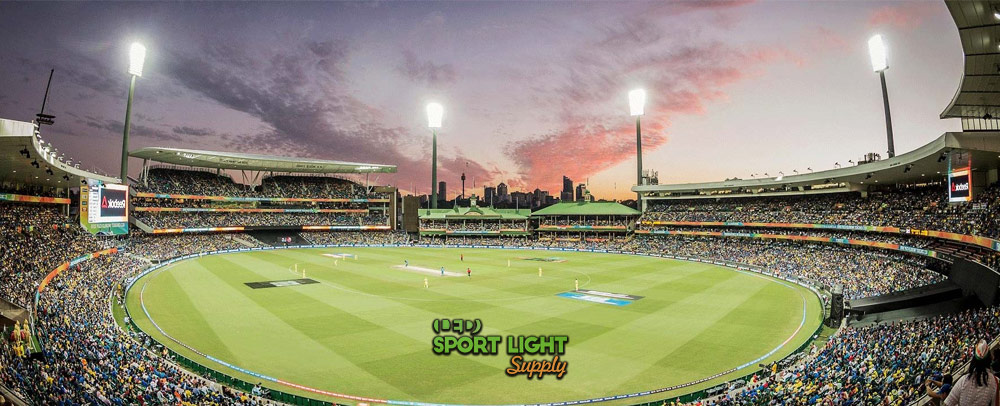
3. Light Source
LED, metal halide, and halogen has the different luminous efficacy. 50,000 watts LED has the brightness equivalent to a 150,000 watts metal halide and 500,000 watts halogen flood lights. The power consumption would be very large if you use halogen lights in the cricket field.
4. Level of Competition
As mentioned above, the cricket field is divided into 3 classes. If the cricket ground is used for practice or recreational purpose (class III), we only need 200 to 300lux. However, if it is used for regional competition (class II), the lux required will raise to 300 to 500lux. For the class I national or international cricket tournaments such as ICC World Cup, we will need 500 to 750lux. Sometimes, we may even need >1000 to 1500 lux ground illumination for televised, 4K broadcasting cricket matches.
5. Cricket Field Light Pole Layout
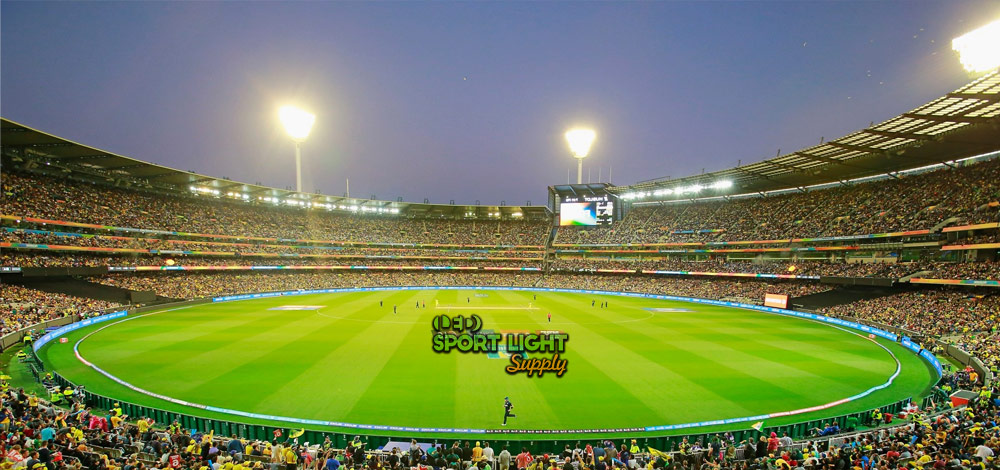
4-pole, 6-pole or 8-pole are the common light pole layouts. The wattage of cricket ground lights can be reduced a bit if there are more light poles. This is because each light pole is responsible for a smaller area, so as to minimize the light loss. However, the light pole cost and installation cost will be higher if there are more light poles. So, it is better to consult a lighting designer to have the best lighting design of cricket field.
6. LED Chip Brand
Different LED chip brands such as OSRAM, CREE have different models. Some LED chips are 130 lumens per watt while others are 200 lumens per watt. We can reduce the wattage of cricket stadium lights by using the 200 lumens per watt LED; however, the price will be higher.
Higher lumens per watt means the LED lights are more energy saving, thus saving your future running cost.
How to Reduce the Wattage Needed for Cricket Stadium Lights?
Why do we need to reduce the light wattage? Of course, we hope to save the running cost of cricket field lighting. The difference between running 50,000 watt LED and 500,000 watt halogen light does matter.
If you turn on the cricket field lights for 6 hours a day, the daily running cost of 50,000 watt LED is 50,000 watts x 6 hours x $0.1/1000 = $30 per day. For halogen lights, the electricity cost becomes $300 per day.
We are sharing with you some tips on reducing the cricket floodlights power.
1. Metal Halide and Halogen Replacement
If you’re still using metal halide or halogen lamps on the cricket field, it’s time to make a change. These conventional light sources are not energy efficient. For example, you will need 10,000 watts halogen lights to generate the equivalent brightness of 1,000 watts LED lights. The best solution is to switch to LED lights.
In addition to energy saving, replacing the metal halide, HPS or halogen cricket field lights with LED can save your maintenance cost because LED has >150,000 hours life span. It is worthwhile to invest in LED lighting.
2. Use More Light Poles
Light attenuates when they travel through the air. Thus, we can reduce the light loss by shortening the propagation distance of the light beam. We can achieve this by using more light poles in the cricket field. This is because each pole will light up a smaller region.
However, not all cricket stadiums can accommodate 6 poles or even 8 poles due to the layout and foundation of the construction site. Besides, the installation cost will be higher.
3. Use Flood Lights with Narrow Beam Angle
The narrow beam angle, says <15 degrees, makes the light more concentrated. This type of floodlight is particularly useful for illuminating the cricket pitch. However, the glare rating will be greatly increased if we use too many floodlights with narrow beam angle.
4. Shorter Light Poles
Another solution for reduce cricket field light power is to install shorter poles. It will minimize the light loss. We can also make use of wider beam angle to illuminate the short range of the cricket ground. This arrangement can reduce the wattage by 5 to 10%
However, a problem will occur if the light poles are too short. The players and spectators may not see the cricket ball if it is hit hard and rises above the light pole.
5. Getting a Full DIALux Lighting Design
DIALux is a photometric software simulating the lux, lighting uniformity and glare rating of a sports field. We can estimate and optimize the wattage required for the cricket field. So, we can avoid using too much wattage that wastes electricity.

